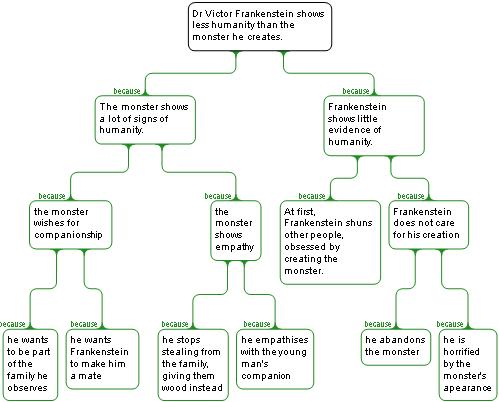The Science Of Scientific Writing Set 5 Set 5-Essays • Second page • Third page • Ordering ideas • Exercise 1 • Signposting • Exercise 2 • Final.
OVERVIEW: The way to well-written science
PART I: Paragraphs and Sentences
SET A: Paragraphs: The Maps Behind Them
SET B: Paragraphs: Using Maps to Meet Readers' Expectations
SET C: Paragraphs with Something Extra: Points and Tails
SET D: The Generic Section: Expectations and Maps as Blueprints
SET E: Scientific Sections: The Methods and Results
SET F: Scientific Sections: The Discussion
SET G : Scientific Sections: The Introduction
SET H : Sentences
SET I : The Paper as a Whole
PART II: The Paper and its Sections
SET 1: Argument Parts
SET 2: Indicator Words
SET 4: Locating Arguments in Prose
SET 5: Rationale's Essay Planner
SET 6: Evidence in Arguments: Basis Boxes
Synthesis 1: Position-Early Paragraphs
Synthesis 2: Position-Final Paragraphs
Synthesis 3: Writing a Discussion I
Synthesis 4: Writing a Discussion II
Exercise 2
Here's a map we could use to structure a literature essay on Mary Shelly's novel 'Frankenstein':
1. Use this map to construct a short essay.
2. Start by cutting and pasting the indicated text below into the Scratch Pad pane of the Text Panel (tab is lower right).
Start cut-paste here
---------------------------------------------------------------------------
3. The claims from the map will provide the content, and we have ordered them into an essay outline for you. You will need to finish the essay by adding signposts, indicators and suitable connecting phrases.
Introduction
[Signpost the introduction to tell your reader what to expect in the body] Dr Victor Frankenstein shows less humanity than the monster he creates.
Body
[Signpost: Indicate here that the argument has two main two main sub-divisions]
[Signpost that you are dealing with "monster" sub-division] The
monster shows a lot of signs of humanity. [Connecting phrase and/or indicator]
the monster wishes for companionship. [Connecting phrase and/or indicator]
he wants to be part of the family he observes. [Connecting phrase and/or
indicator] he wants Frankenstein to make him a mate. [Signpost] the
monster shows empathy. [Connecting phrase and/or indicator] he stops
stealing from the family he meets in the forest, giving them wood instead. [Connecting
phrase and/or indicator] he empathises with the young man's companion.
[Signpost that you are dealing with "Frankenstein" sub-division]
Frankenstein shows little evidence of humanity. [Connecting phrase and/or
indicator] At first, Frankenstein shuns other people, obsessed by creating
the monster. [Connecting phrase and/or indicator] After he succeeds,
Frankenstein does not care for his own creation. [Connecting phrase and/or
indicator] he is horrified by the monster's appearance [Connecting phrase
and/or indicator] he abandons the monster.
Conclusion
[Connecting phrase and/or indicator to lead into the conclusion: provide a mini-outline of the arguments above] Dr Frankenstein shows less humanity than the monster he creates.
Hints
- If you need help completing the essay then drag the above map onto the workspace, and select the position box, then open the text panel and select 'essay preview' to see a guide
- Don't just type in whatever the preview suggests - make the essay your own by choosing your own phrases and indicators.
-----------------------------------------------------------------------------------------
End Cut-paste here
2. Check your work against the model answer.
Content of this page drawn in whole or part from the Austhink Rationale Exercises with permission from Austhink.
